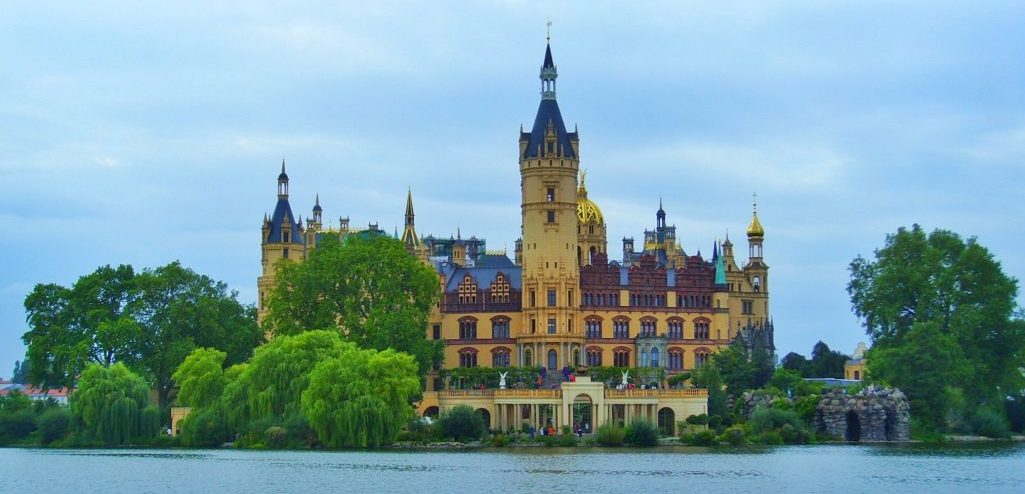A historic walk through Schwerin, Germany
Spread the love
Germany is famous for its fairytale castles. My favorite one is the castle in Schwerin, situated on an island in a calm lake, surrounded by a landscaped park. The entire city is built around water, nicknamed the City of the Seven Lakes. The last time somebody actually lived in the castle was in 1918, when Germany lost the First World War. The Kaiser abducated and all of the Dukes and Grand Dukes followed to make room for a new order.

So I started to wonder. What would the family of the last Grand Duke have seen or done during their last glorious years in Schwerin? Before the war, just around the turn of the century. When they could not imagine what gruel the future would bring. During a time that brought progress, optimism and technological advancement in many places in Europe.

In France this time is called La Belle Epoque, in Spain it was Modernism, in England it was the Edwardian Era and in Germany it was called Gründerzeit. During my research I came across some businesses in Schwerin founded during that time that still exist today. Join me, on my historical walk of City of the Seven Lakes, proud capitol of my home state.
Shopping in Schwerin Old Town
One of the most historic looking shops is the Otto Preussler cigar shop, located in a narrow house in Friedrichstraße. It was established in 1924, before then there there was a comb maker occupying the retail space. Legend has it that this building was erected on top of an entrance to a tunnel used by the town’s poltergeist, Petermännchen.

Around the corner, the fashion house Kressmann was founded in 1885, even if the location in Schwerin only opened in 1911. It has been an institution for the fashionable ladies ever since. On the top floor you’ll find the Café Honig, take a break and have a refreshment.

Wining and dining
If, however, you want to take your tea where the Duke used to take his after 1901, visit the hotel Niederländischer Hof on the shore of lake Pfaffenteich at the end of the street. That is the year it received it name in honor of the Duke’s marriage to the Dutch Queen Wilhelmina. It’s a hotel to this day with a comfortable library to remind you of days past.

During that time, while you stroll around the lake you would have noticed the construction site of the electric power station on the nothern shore that completed in 1904. A grand example of turn-of-the-century architecture. They already had ferry services across to the other side, in case you got tired of walking or merely wanted to enjoy the breeze. The eastern shore was lined by homes built in the late 1800s that you can still admire today.

Wine seems to be business for eternity. Where did Edwardians get their wine in Schwerin? At Weinhaus Wöhler in a then new part of town called Schelfstadt. The wine whole sale company was founded in 1819 and renovated the buildings in 1895, creating the historic wine tasting rooms.
Schwerin and its people

If you were not lucky enough to meet the Grand Duke, his new wife or the Petermännchen ghost, you probably still would have met August Felten on your stroll. He would have been sweeping the streets or some other job around town. August was infamous for his whit and dry humor. Surely he would have made you smile as you concluded your turn-of-the-centry walk in Schwerin.



One Comment